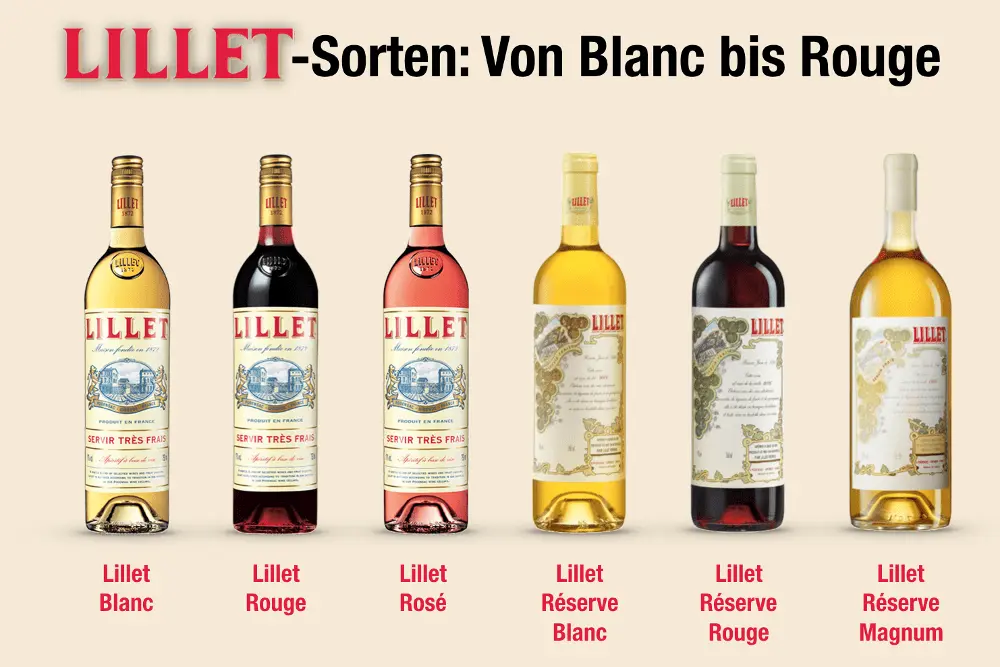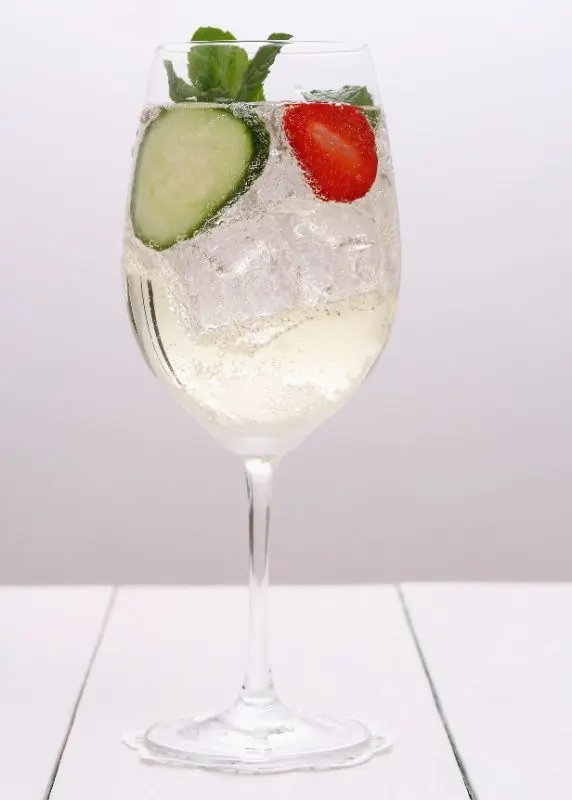Lillet is a French aperitif from the village of Podensac in the south of Bordeaux. According to the European classification, it belongs to the category of flavored wines, it can be white, pink or red, 85% consists of wine (Semillon or Merlot), the remaining 15% is citrus liqueurs from sweet and bitter varieties of oranges. The blend is blended and aged in oak barrels, then filtered and bottled. The exact production technology is the author’s secret of the company.
Initially, cinchona liquor was also included in the list of ingredients, at that time the drink was called Kina Lille (Kina Lillet) from the word “cinchona”, but in 1985 this ingredient was abolished. Manufacturers have realized that consumers like sweet drinks more than bitter ones. However, according to old memory, Lille is still sometimes referred to as a tonic, and the label states: “the drink contains the best wines mixed with fruit liqueurs and quinine, the secret recipe of the product has been passed down from generation to generation.”

History. The aperitif was named after its inventors, the Lille brothers. Winemakers founded their own production in Bordeaux in 1872, but the idea to produce liquor aperitifs did not belong to them, but to Dr. Kermann. In those days, Louis Pasteur just made great discoveries in the field of microbiology, the topic of medicine was relevant, people were afraid of diseases. On this wave, alcohol in general and quinine tonics in particular were successful, as doctors declared them to be healthy drinks to fight infections. The brothers Paul and Raymond were not at a loss and quickly realized that in order to capture the newly opened market, they needed to come up with a fresh idea.
So in 1887, Kina Lille appeared. The drink differed from other aperitifs in white color (the rest were red), in addition, it was made in the famous Bordeaux wine region. In the 1920s, the brand became popular both in France and outside the country – primarily due to advertising campaigns. Lille was served on transatlantic liners, he “shone” in the high society of New York, was part of the most fashionable cocktails.

In 1962, a red version of the drink appeared, and in the 1970s, the word “Kina” disappeared from the name. In 1985, with the help of the Institute of Oenology in Bordeaux, the recipe was improved: the sugar content was slightly reduced, and the fruity taste intensified. In the same year, production was taken over by Bruni Borie, and in 2008 the brand was bought by Ricard. Finally, in 2011, pink Lille appeared, aimed at the ladies’ audience.
Types and taste
- Lillet Blanc – orange, caramel, honey, pine resin, exotic fruits.
- Lillet Rose – red fruits, sweet orange, grapefruit.
- Red Lillet – ripe black fruits, fresh oranges, vanilla, a little bit of spices.

How to drink Lille
It is an aperitif, it is served before meals, chilled to 6-8 °C. In France, they combine it with ice and a slice of lemon or orange, in Germany, Austria and Switzerland they prefer the Lillet Vive cocktail – 1 part of the white variation of the drink, 2 parts of tonic, cucumber slice, strawberries, mint leaves.

Cocktails with Lille
- Vesper – 1 part Lille, 2 parts vodka and 6 parts gin, but the proportions can be adjusted to the taste of the taster. The recipe was invented by writer Ian Flemming specifically for Bond.
- Lille Mojito – rum is replaced with white Lille (for 3 parts of an aperitif – 1 part of sugar syrup, 6 parts of soda, lime and mint).
- Old Etonian – equal parts gin and Lille, 2 drops of orange bitter and the same amount of almond cream liqueur.









